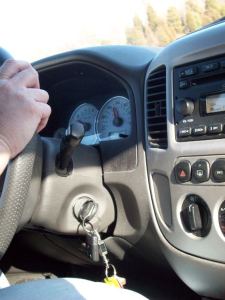Early Warning Systems May Prevent Columbia Rear-End Accidents
Rear-end accidents happen every day in Columbia, Anderson and in Rock Hill and throughout the country. 
A recent Penn State University study indicates rear-end crashes cause 144 million hours of delays to drivers as a result of motor vehicle accidents every single year. These crashes account for approximately 30 percent of all vehicle-accidents, and also for about 30 percent of all traffic delays. Almost 5 percent of motor vehicle fatalities are also attributed to rear-end crashes.
Victims of rear-end accidents are not only in passenger cars. The Los Angeles Times also reports that about 3.5 percent of deaths in motorcycle collisions occur in rear-end accidents.
Drivers need to do everything they can to try to avoid causing a deadly collision. A rear-end accident lawyer knows early warning systems, designed to reduce rear-end crashes, may be the ideal solution to helping stop these common types of collisions.
But while technology can make a positive impact on improving road safety, it is no substitute for drivers making smart and careful choices behind the wheel.
Early Warning Systems for Rear-End Collisions
The National Highway Traffic Safety Administration published a report on the use of rear-end crash avoidance systems.
The report revealed an 80.7 percent decline in motor vehicle collisions when a rear-end crash warning system is effective. There was actually an even bigger reduction in the severity of the collision when a system is used to prevent rear-end accidents. Collision severity may be reduced by 96.5 percent. The reason there was a bigger decline in collision severity is because warning systems typically get a driver to try to stop car. Even if he doesn’t succeed in stopping the vehicle and completely avoiding the accident, hitting the brakes at least causes the vehicle to slow down.
The benefits of the warning systems happen only when they are reliable. When a warning system gives false positives, it can actually cause a driver to become less safe than if no warning system is in place. Distrust due to false alarms causes motorists to ignore or tune out warnings. The NHTSA believes understanding why drivers don’t always comply with warning alerts is key to developing an effective system to prevent crashes.
Choosing the right kind of warning system is also important. Systems with auditory warnings tend to be more effective when a crash situation is imminent and a driver needs to act right away to try to avert a collision. An early warning system tends to be better than a later warning system because it gets a driver’s attention in time to gradually decelerate.
Gradually slowing down and coming to a stop means the brakes work better, and there is less chance of the motorist who slams on the brakes also being rear-ended by the car behind him. When collision avoidance systems are developed, therefore, it is a good idea to focus both on the reliability of the warning system and on ensuring it is sensitive enough to react to give a driver a little more time to safely avert a crash.
South Carolina accident victims should contact attorney Johnny Felder of McGowan, Hood & Felder, LLC at (888) 572-3800 for a free case consultation. Also serving Anderson, SC, Rock Hill, SC, Sumter, SC, and Georgetown, SC, and surrounding areas.




